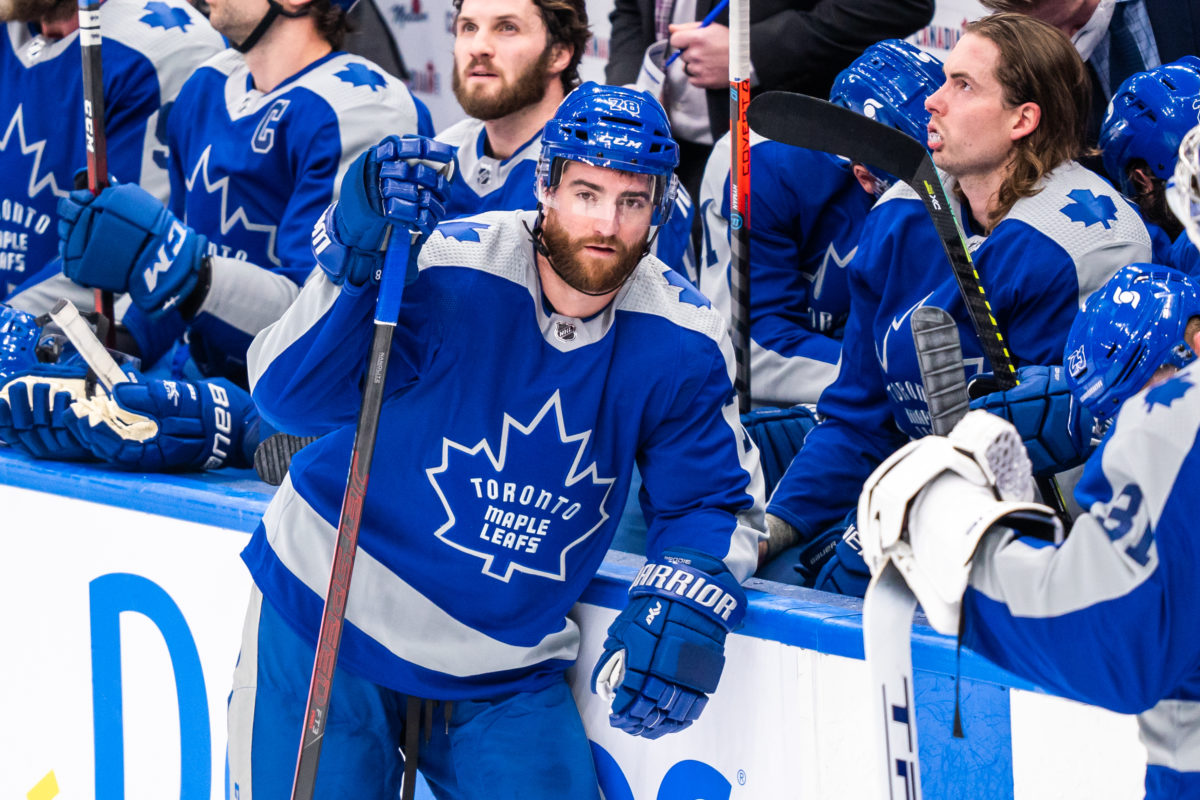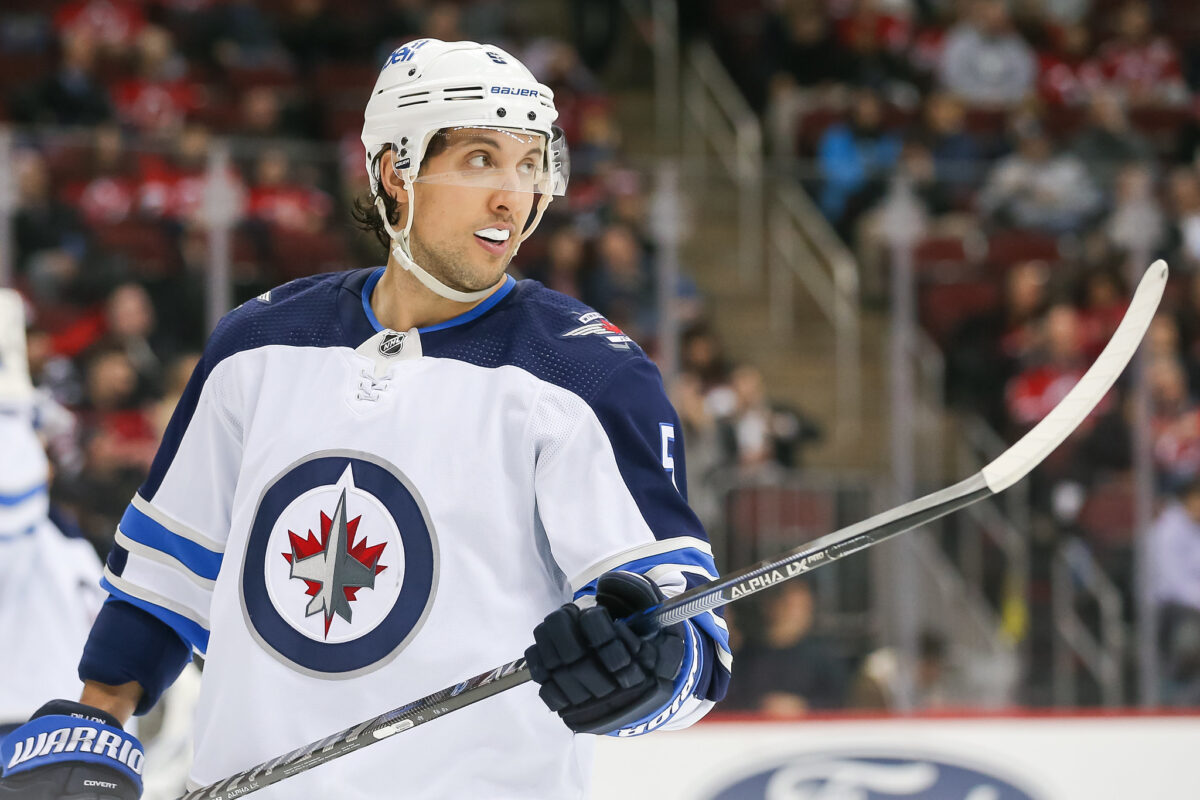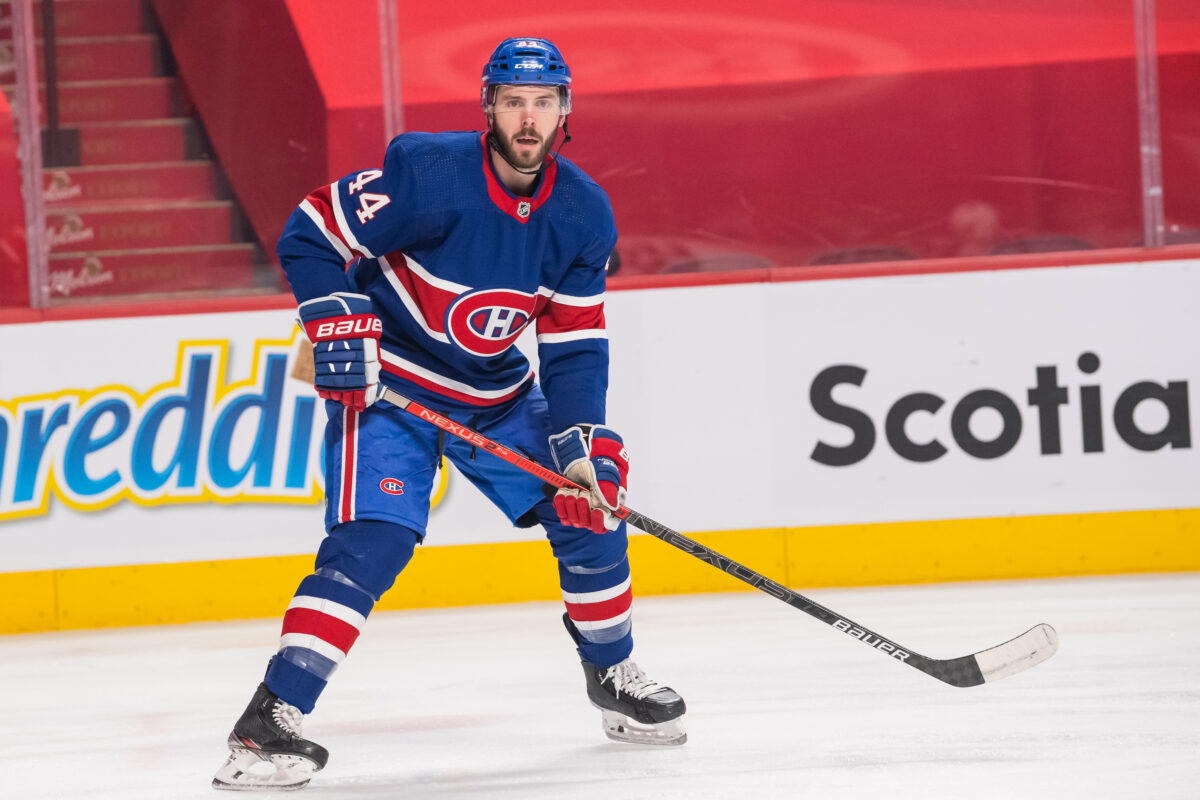The Toronto Maple Leafs have kicked off their 2023–24 season with two straight wins that have brought hockey fans back to the late 1980s with the number of goals scored in the games. The team offensively appears to be running like a well-oiled machine. Auston Matthews and William Nylander have scored eight goals in six periods for the Maple Leafs, and the whole forward group is firing. However, defensively, this team needs work.
Maple Leafs general manager (GM) Brad Treliving knew it needed work when he was hired, and after addressing the forward group in the offseason, he knows it still needs work. When you look at the back end, there aren’t many options for the team to work with. But one name stands out, and that is T.J. Brodie. He is on an expiring contract and, based on early eye tests, seems to have lost his game. This could mean that the Maple Leafs could look to move on from Brodie later this season to improve their blue line for the playoffs.

Brodie, 33 years old, could be used as a trade chip to help the Maple Leafs’ blue line. In doing so, Treliving could look at a younger, up-and-coming team as a trade partner. Now, he does carry a modified no-trade clause, which means he submits a 10-team no-trade list, which allows the Maple Leafs to work with him and other teams to get a deal done. The aim for Treliving and the Maple Leafs is to shed some salary and become more physical while still matching Brodie’s defensive output. With the additional cap space, they can flip a pick for another physical defensive defenceman, such as Ilya Lyubushkin from the Anaheim Ducks. So, let’s look at some teams that could be good trade partners to find a deal that helps both teams.
Trade Partner #1: Winnipeg Jets
Maple Leafs Receive: Brenden Dillon & 2024 4th Round Pick
Jets Receive: T.J. Brodie & 2024 5th Round Pick
Note: This trade may only happen if the Jets are not in a position to contend for a playoff spot
Trade Reason
The reason behind this trade was mentioned above: the Maple Leafs need to improve their defence core, meaning not offensive output but rather defensive output. In the past, Toronto has struggled to match other teams’ physicality, and this season the front office addressed that with the signings of Tyler Bertuzzi, Max Domi, and Ryan Reaves. However, as mentioned previously, the team doesn’t truly have that on the back end. They have skilled players like Morgan Rielly, John Klingberg, and Timothy Liljegren, but they lack a big-bodied blueliner who will throw a big hit and, when needed, drop the gloves.

This is why Brenden Dillon makes sense; he is way more physical than Brodie and could find a perfect fit on the Maple Leafs’ blue line. The only downside is that he is a left-handed defenceman. However, that shouldn’t be a deterrent to the trade because it allows Liljegren to have an expanded role alongside Rielly on the top pairing. Liljegren has shown in the past that he can play beside Rielly, which gives him the chance to be the first-round pick that he was drafted to be. Dillon could slot into the second pairing alongside Klingberg and give him more defensive support. The subsequent roster move would also mean Jake McCabe would move down to the third pairing with Mark Giordano unless the club brings in another defenceman.
Dillon can bring exactly what Luke Schenn brought to the team last season: a veteran presence on the backend who can help calm the game down when needed. Dillon had 108 blocks and 198 hits in 82 games with the Winnipeg Jets last season, which is 151 more than Brodie. In terms of blocked shots, the two match up fairly well, at around 110 each season. But as mentioned, Dillon will bring that hard-to-play-against physicality as well as the defensive mindset, which is an area that Brodie lacks and that Leafs Nation has been clamouring for since the start of the Matthews’ era in 2016–17.
Related: 3 Takeaways From Maple Leafs’ 7-4 Win Over Wild
In terms of cap space, the Jets have some space on their books to take on the entirety of Brodie’s $5 million average annual value (AAV) contract. Dillon’s AAV is $3.9 million, so the difference is only $1.1 million, which makes this deal fairly easy to go through. The Maple Leafs would be able to clear the extra $1.1 million and could use that open space to address other needs, as a bit more cap space could be another depth player that ends up playing a big role in the playoffs. Regardless of the playoff position of both teams, to me, this trade could help both clubs in their pursuit of the Stanley Cup.
Trade Partner #2: Washington Capitals
Maple Leafs Receive: Joel Edmundson & 2024 4th Round Pick
Capitals Receive: T.J. Brodie & 2024 5th Round Pick
Note: This trade may only happen if the Capitals are not in a position to contend for a playoff spot
Trade Reason
Joel Edmundson has been a reliable defenceman his entire career. Unfortunately, injuries have plagued him, which includes this season with the Washington Capitals. He will miss four to six weeks with a fractured hand and was placed on injury reserve as of Sept. 26, 2023. However, when he comes back, it’ll change the complexion of the Capitals’ defence core. The Maple Leafs will be getting a fearless leader who knows what it takes to win from his time with the St. Louis Blues in 2019. This trade would be the type of deal that happens if the Capitals are close to being out of playoff contention; however, there is still a chance that it happens regardless of the playoff picture.

Edmundson has the physical traits that Brodie doesn’t but is on the same level, if not better defensively than he is. He is also a left-handed defender, so the roster moves would be similar to the Dillon trade, where Lilejgren gets a chance on the top pairing. With that said, Edmundson can play on the right side, which can allow the Maple Leafs to leave the rest of the defence core alone.
At 6-foot-5 and 221 pounds, he can provide so much for a team in the playoffs. Last season he had 149 blocks and 112 hits in just 61 games with the Montreal Canadiens. He may not match the hit output that Dillon or Schenn can bring, but he still throws the body more than most of the blue line that is currently in Toronto. He can also bring the veteran leadership that exemplifies maturity; he is the type of blueliner that a Stanley Cup-winning team would want, and that is why Treliving should be calling Capitals’ GM Brian MacLellan about Edmundson as early as possible after he returns from his injury.
Related: 2 Barrie Colts Who Went Onto Play for the Maple Leafs
In terms of cap, this trade may be hard to facilitate. Brodie’s AAV is $5 million, and he only has one year remaining on his deal. Whereas Edmundson had his salary retained, which brings his AAV for the Capitals down to $1.75 million. Washington is very close to the cap ceiling, as is Toronto, so brokering a trade may be difficult but not impossible. Some factors could come into play, such as if a team has a player on long-term injury reserve (LTIR) or if the Capitals are out of playoff contention and are selling players off to clear cap space. This can open up more space on their books to take on the full AAV of Brodie’s contract. Lastly, as a third-party trade partner, this may cost the Maple Leafs another pick, but sometimes you have to part with picks to make your team better to win the Stanley Cup.
It is hard to say this early in the season if either of these players will be available, or even if Brodie will be. However, the Maple Leafs need to improve their defence core for the playoffs, which means having mean, tough, hard-to-play-against blueliners like Dillon and Edmundson. Only time will tell if either of these trades will work, but for now, Leafs Nation gets to dream about it.
